#Fermentation of a Hermaphrodite
Explore tagged Tumblr posts
Text
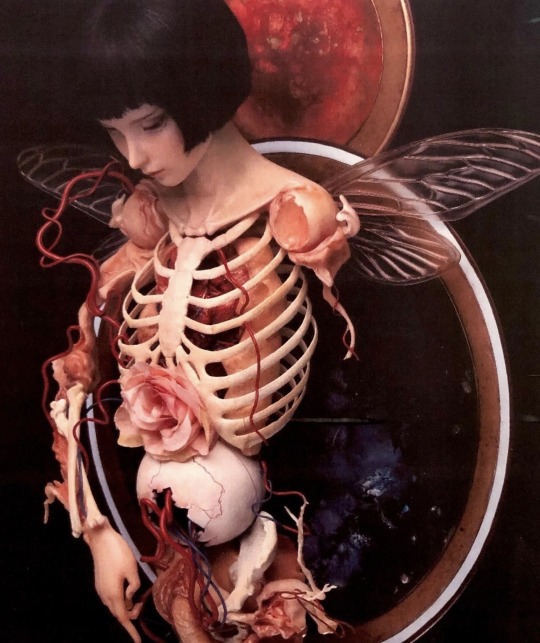
Takato Yamamoto: Fermentation of a Hermaphrodite (2008)
2K notes
·
View notes
Text
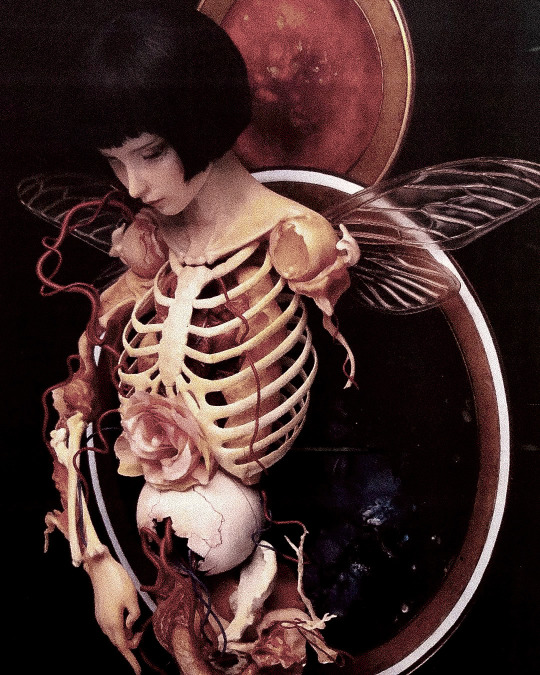
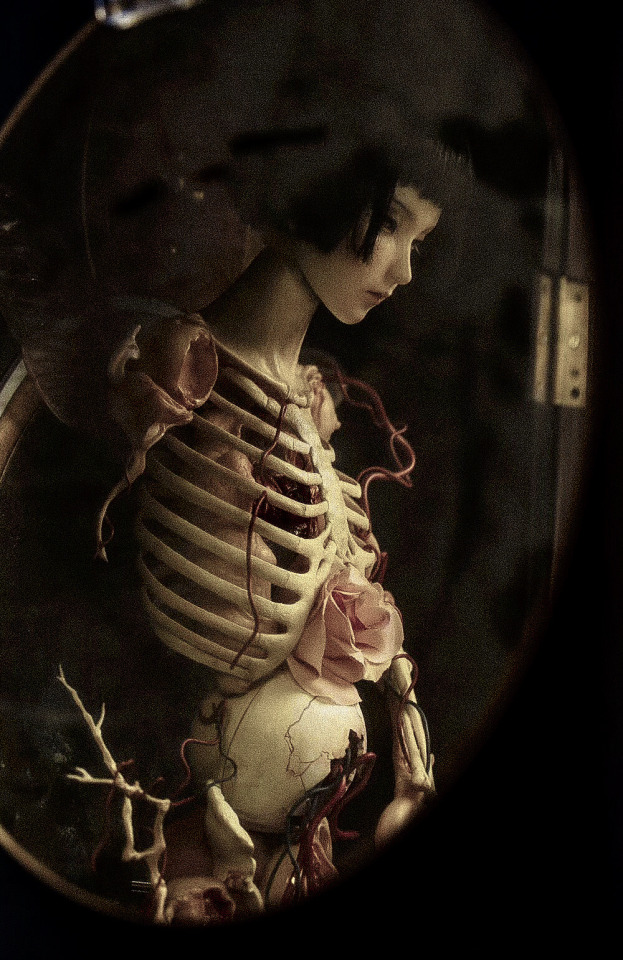
Mana Models x Takato Yamamoto: 'Fermentation of a Hermaphrodite' 3D Collaboration Figure (2018)
#takato yamamoto#mana models#collaboration#3d#figure#sculpture#gothic#heisei estheticism#ukiyo e#japan#2018#fermentation#hermaphrodite#contemporary art
1K notes
·
View notes
Text
Remotusverse sophonts
Long post under cut
Feel free to send asks and questions :)

From left to right:
Laagharee (Kenterians)
Carnivorous bird species originating from now uninhabitable planet.
Average adult height is 250cm, weight - 170kg. Males are a bit taller, have vibrant colored eyes and dark feathers. Females are bulkier and shorter, have vider shoulders and hips and generally physically stronger than males. They have light colored feathers and dull eyes.
Male and female coloration from different ethnicities:

Kenterians lay large softshell eggs (1-2 at a time). Hatchlings are the size of an adult cat. Unlike adults children are almost fully feathered and loose their feathers when they reach adulthood at 25-35 years old. Laagharee live up to 200 years or more.
Laagharee child:

Kenterians have a very complex voicebox, that allows them to make and mimic a wide variety of sounds. Their language is very complex and often uses whistles, hissed, clicks and other sounds besides regular phonemes. This makes understanding and speaking hard for other aliens, so there is a more widely used simplified version of the language. Writing system has letters and symbols for sounds(most sounds are not used in simplified version) and also vowel length indicators (and tone indicators in complex version).
Garavi

Definitely not your typical human placeholder species ;)
Look like humans, live like humans, function like humans.
Except they have horns, copper based blood, blue meat and different skin pigmentation.
Garavi can be blue, teal, lime and yellow colored. Basically blue=white, green=brown and yellow=dark skin (and corresponding ethnicities idk how to phrase it) . Pigment is tied to genetics and not sun exposure but is kinda influenced by it. Also they can't tan.
Horns are about 3-5cm long and can have different shapes. Females horns are a bit smaller than males. Horns are solely for display purposes and in modern times don't have any practical uses.
Tagaar
Humanoid obligate carnivore. Apex predator of their harsh cold homeplanet.
On the outside they look similar to garavi but are actually very different. The most obvious features are 12 red facet eyes, head crest and 6 tendrils. Their skin color and patterns varies from blues to browns with stripes and spots.
Crest and tendrils are used in display and termoregulation . Males crest and tendrils are bigger and pointier, females have smaller and smoother crest and round tendrils.
Inside the tendrils there are secretary glands that produce antifreeze liquid that absorbs and keeps warmth. This liquid spreads under the skin across all body, and keeps tagaar from freezing. Tagaar people have a unique termoregulation system. When outside temperature is warm their body only absorbs the heat, in cold temperatures antifreeze liquid keeps heat inside the body and only after a few hours when it cools down the body starts to produce its own heat. Unfortunately if very how weather (over 25-30°C) this can lead to overheating, fainting and even death.
Out of their 12 eyes only bigger two see color. Other eyes are pointed to the sides and detect movement and heat instead. Tagaar have a worse color vision and do not see green.
Tagaar also have sharp teeth, wide opening outer jaw and flexible inside jaw, hidden inside the throat and powerful jaw muscles. Their salvia contains ferments that prevent blood clotting and promotes wound rot.

Females lay 8 - 10 round semi transparent fist sized eggs. After two months larva hatches. Larvae are small and white, they have exposed inner jaw and developing outer jaw, their bones are soft, limbs are extremely short, and they also have a tail to store nutrients. After 3-4 years larva forms a cocoon out of its tail and will morph into a imago for another two years. After morphing tagaar resembles adults, grows out limbs, proper jaw, small crest and tendrils, forms a sex and continues development into an adult.
Cana-omi
Small, four armed hermaphrodite obligate herbivores.
Species name translates to "pinecone head". Two growths on their head and two pairs of arms are their most prominent features.
Their hands have four digits, two of tnem being thumbs. Feet have similar structure. This alows them to easily climb gigantic trees of their home planet.
Their skin is covered in thin fur and it's color can change from brown to green depending on the persons mood, wellbeing and hormonal cycle.
Cones on their head contain some sensory organs and hormone secreting glands. Under the first skin fold there are ears. There are nostrills in between theic cheeks and cones and another pair on their chest.
Cana-omi are hermaphrodites and chage sex in yearly cycles. I haven't thought more about their reproductive system for now.
Tcha'chsi
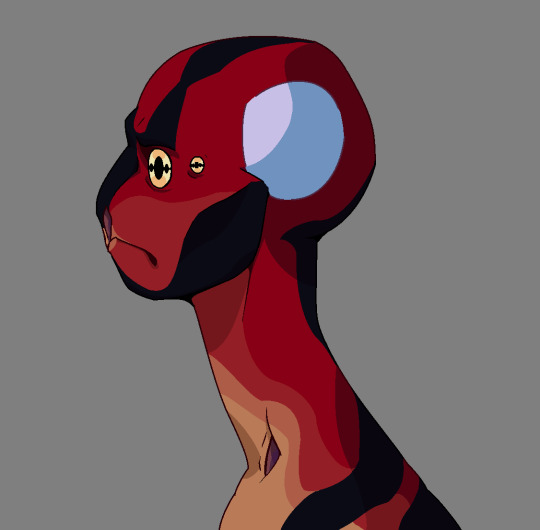
Small flying sophonts. Their species is currently uncontacted (except only one individual) and is in it's medieval age.
They have bat like wings with membranes stretched from tail to fingers and are capable of active flight. They use their feet as hands instead.
They have tastebuds on their face that can smell and taste things. Inside their mouth are 4 venomous fangs. Tcha'chsi poison their prey and swallow it whole.
They speak in clicks and scritches from two nostrills on the base of their necks.
Tcha'chsi have 5 sexes, two "female" , three "male". Females are white and gray, and males are yellow, orange and red. Red colred males are considered a lower caste of society and are forbidden from reproducing.
Shiarha
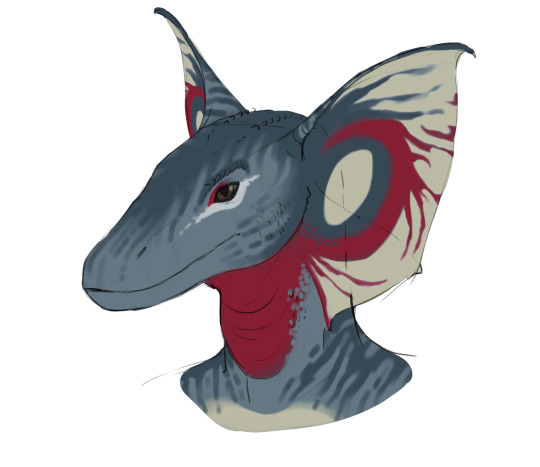
They are a species of four armed cannivorous lizards. Currently uncontacted but space developed.
They can lift frills on their head to intimidate oponents. Males have bigger red frills and bright red throat used in mating displays.
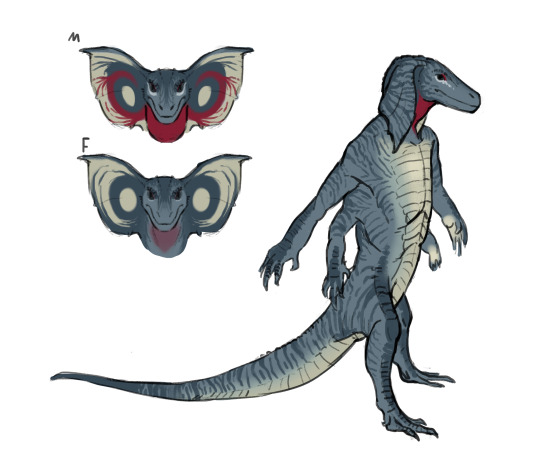
Communicate mainly in hisses and short words and tail gestures.
(You probably won't see many content on them sorry not sorry)
Other sophonts
- questionably sentient sea slugs
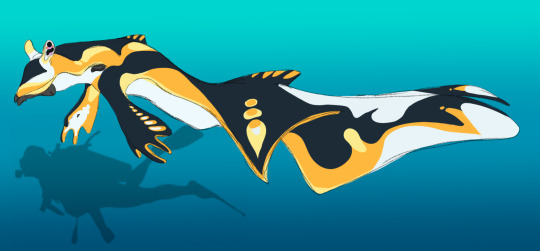
- extinct octopus-like guys
- silicon based whatever is it
-triangles
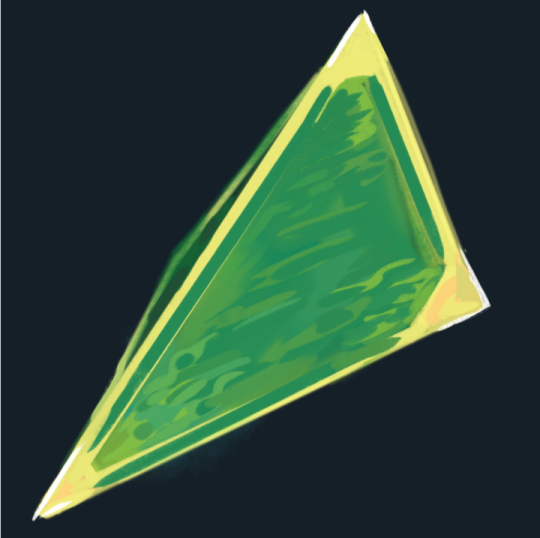
- Giant planet eating but surprisingly gentle monster.
- other paranormal creatures
#Remotusverse#my art#original species#speculative biology#Space#Sci fi#Sophonts#Laagharee#Kenterians#Garavi#Tagaar#Tcha'chsi#Shiarha
27 notes
·
View notes
Text

Fermentation of a Hermaphrodite, 2008, by Takato Yamamoto
16 notes
·
View notes
Text
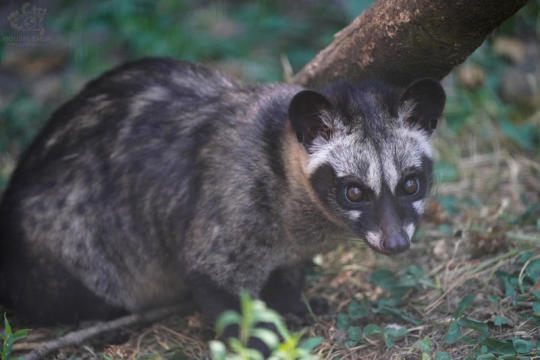
'Cauyse I'm Beginning To Believe
When: August 7, 2022 Where: Faunapark Flakkee Nieuwe-Tonge, the Netherlands
It's crazy how much these youngsters look like mini adults from such a young age.
Species: Asian Palm Civet (Loewak, Palmroller of koffierat) Latin name: Paradoxurus Hermaphroditus Originates from Pakistan, India, Southern China and Southeast Asia. Current status: Least Concern
Did you know: … It is probably for its part in the production of Kopi Luwak – a civet coffee that refers to the seeds of coffee berries once they have been eaten and defecated by this animal – that they are best known. … It has been suggested that the increase of capturing Asian Palm Civets to produce Kopi Luwak – aside from being hunted for bush meat and the pet trade – may constitute a significant threat to wild populations. … Unlike similar Civet species, the Asian Palm Civet has a ringless tail. … Their habit of feeding on palm flower sap, which turns into toddy (a sweet liquor) when fermented, has been cause to sometimes name Asian Palm Civets “Toddy Cats”. … Anal scent glands will emit a nauseating secretion as a chemical defense when threatened or upset. … Despite what it’s species name might suggest – Hermaphroditus – the Asian Palm Civets have, like all other mammals, two distinct sexes and are not in fact hermaphrodites.
© Mouselemur Photography • Portegiesje Our work is copyrighted. Do not reproduce, copy edit, publish, transmit or upload in any way without our written permission. Send us a note or chat message if you want to use our work as a reference.
0 notes
Text
Vitis vinifera
Vitis vinifera, the common grape vine, is a species of flowering plant, native to the Mediterranean region, Central Europe, and southwestern Asia, from Morocco and Portugal north to southern Germany and east to northern Iran.[2] As of 2012 there were between 5,000 and 10,000 varieties of Vitis vinifera grapes though only a few are of commercial significance for wine and table grape production.[3]
The wild grape is often classified as Vitis vinifera sylvestris (in some classifications considered Vitis sylvestris), with Vitis vinifera vinifera restricted to cultivated forms. Domesticated vines have hermaphrodite flowers, but sylvestris is dioecious (male and female flowers on separate plants) and pollination is required for fruit to develop.
Grapes can be eaten fresh or dried to produce raisins, sultanas, and currants. Grape leaves are used in the cuisine of many cultures. The fresh grapes can also be processed into juice that is fermented to make wine and vinegar. Cultivars of Vitis vinifera form the basis of the majority of wines produced around the world. All of the familiar wine varieties belong to Vitis vinifera, which is cultivated on every continent except for Antarctica, and in all the major wine regions of the world.
… HistoryPrehistory
Changes in pip (seed) shape (narrower in domesticated forms) and distribution point to domestication occurring about 4100–3000 BC,[4] in southwest Asia, South Caucasus (Armenia[5][6] and Georgia), or the Western Black Sea shore region (Bulgaria, Romania). The earliest evidence of domesticated grapes has been found at Gadachrili Gora, near the village of Imiri, Marneuli Municipality, in southeastern Georgia; carbon-dating points to the date of about 6000 BC. The oldest winery in the world (dating to 4100BCE) was found in the Areni-1 cave, which lies in Areni, Armenia.[7][6] Grape pips dating back to the 5th–4th millennium BC were also found in Shulaveri; others dating back to the 4th millennium BC were also found in Khizanaant Gora. Wild grapes were harvested by neolithic foragers and early farmers. For thousands of years, the fruit has been harvested for both medicinal and nutritional value; its history is intimately entwined with the history of wine.[8] …
0 notes
Text
How Precision Breeding Is Revolutionizing Cannabis Genetics



Transformative Advances In Cannabis Genetics Through Precision Breeding
Cannabis Sativa is a plant known for its unique and intricate genetic composition, which is primarily determined by its chemical makeup, comprising cannabinoids, terpenes, and other compounds. Over the years, researchers have made significant advancements in the study of cannabis genetics, enabling them to cultivate the plant in a targeted manner and enhance its therapeutic effects.The completion of the cannabis genome sequencing project has been a significant milestone in this regard, providing scientists with a detailed map of the plant's DNA, which has allowed them to gain a deeper understanding of its characteristics and traits. This has facilitated the development of precision breeding programs, enabling growers to manipulate specific genes and select for desired outcomes.Targeted selection is crucial for shaping the characteristics of cannabis plants. By aiming for specific traits such as high cannabinoid content, unique terpene profiles, or resistance to pests and diseases, growers can create cannabis varieties tailored to various consumer preferences and medical needs.To produce feminized seeds, growers use a process called feminization, which involves inducing a female plant to produce seeds without pollination by a male plant. While the resulting seeds should yield female plants, it's important to note that they may have a slight tendency to develop hermaphroditic traits, especially if exposed to stress during cultivation.In contrast, traditional breeding with regular seeds, produced through the natural pollination of a male and female plant, generally has a lower risk of hermaphroditism. In this case, growers select plants based on desired characteristics and eliminate those with undesirable traits to stabilize genetics.Genetic ManipulationThe interest in cannabidiol (CBD), a non-psychoactive compound found in cannabis, has led to research on expanding the range of cannabinoids present in cultivated varieties. Scientists are exploring minor cannabinoids such as cannabigerol (CBG), cannabinol (CBN), and tetrahydrocannabivarin (THCV) in addition to THC and CBD.Each cannabinoid has its own unique therapeutic benefits, and genetic manipulation is emerging as a powerful tool to increase their presence in specific varieties. Terpenes, aromatic compounds found in cannabis and other plants, contribute to the plant's odor and therapeutic effects.By manipulating terpene profiles, growers can create varieties with specific aromas and targeted therapeutic benefits. This precision enhances the consumer experience and expands the potential applications of cannabis across various industries, including perfumery and wellness.As cannabis genetics advance, ethical considerations come up. Issues such as genetic patents, intellectual property, and potential impacts on biodiversity raise questions about responsible development and commercialization of cannabis varieties.



Shaping The Future of CannabisIn the future, customized cultivations tailored to individual health needs could become possible. Personalized medicine, guided by genetic information, could steer consumers towards cannabis varieties optimized for their physiology and preferences. This aligns with the trend of personalized healthcare and wellness practices.However, this development will impact the natural evolutionary changes of the plant and leave a significant anthropogenic imprint on the future of cannabis genetics.The frontier of cannabis genetics extends beyond traditional cultivation. The emerging field of synthetic biology allows for the production of cannabinoids through microbial fermentation, eliminating the need to cultivate the plant.Laboratory-grown cannabinoids may revolutionize the pharmaceutical industry by providing a sustainable and controlled alternative to traditional cultivation. The debate between organic and inorganic production of compounds will continue to be a relevant issue.What Is The Poly-Hybrid Crossing?The shift from pure strain hybridization to poly-hybrid crossing in cannabis cultivation is influenced by several factors. One of these is growers' desire to create new and unique varieties with specific traits, such as higher cannabinoid content, unique flavors, or increased resistance to pests and diseases.Hybridizing pure strains can limit the ability to combine desired traits from different varieties, prompting growers to explore poly-hybrid crossing for a wider range of possibilities.Another important reason for poly-hybrid crossing is genetic diversity. Hybridizing pure strains can lead to limited genetic diversity within a strain, potentially causing issues such as inbreeding depression.By incorporating genes from multiple varieties through poly-hybrid crossing, growers can introduce greater genetic diversity, thus improving the overall vitality, adaptability, and resilience of resulting hybrids.Poly-hybrid crossing is a breeding technique that allows growers to experiment with a vast variety of cannabinoids and terpenes. As the demand for cannabis varieties that cater to both therapeutic and recreational purposes is on the rise, breeders have created strains with specific cannabinoid and terpene profiles.



By combining different cannabinoids and terpenes through poly-hybrid crosses, growers can create unique strains with distinct effects, flavors, and aromas, meeting the diverse needs of cannabis enthusiasts.Market demand plays a significant role in driving poly-hybrid crossing. The cannabis market is diverse, and consumers are constantly seeking new varieties and experiences. Poly-hybrid crosses offer growers the opportunity to create new and differentiated products that meet the evolving preferences of consumers, thereby increasing the variety of options for both recreational and therapeutic purposes.Scientific advancements in cannabis research and cultivation techniques have made it possible to conduct poly-hybrid crosses more effectively and efficiently. As our understanding of cannabis genetics improves, breeders can make more informed decisions about which strains to cross to achieve specific goals.Finally, legal and regulatory changes in some regions have created a more open and dynamic environment for cannabis breeding, allowing growers to experiment with different crosses and explore the full spectrum of plant genetics.It's important to note that both pure strain hybridization and poly-hybrid crossing have their merits and specific applications. The landscape of cannabis breeding continues to evolve, driven by a combination of scientific advancements, market demands, and the pursuit of unique and desirable traits.Challenges Of Trait Homogenization in Cannabis CultivationThere are concerns about the reduction of genetic diversity within cultivated cannabis varieties due to breeding practices. The focus on creating varieties with specific desirable traits like high THC content or unique flavor profiles has often involved repeated crossing of closely related parent plants. This process is called poly-hybridization, which can lead to a decrease in genetic diversity within the cultivated genetic pool.Poly-hybridization involves crossing already hybridized plants, which can result in the loss of unique genetic combinations. As time passes, this can lead to homogenization of traits within the cultivated cannabis population. Furthermore, selective breeding for specific traits may unintentionally reduce the overall genetic diversity of the crop.The reduction of genetic diversity in cultivated cannabis varieties can impact the resistance and adaptability of plants. When there is a lack of genetic diversity, the crop becomes more susceptible to pests, diseases, and environmental stress.



Preserving Cannabis Genetic Heritage Is The Key To An Innovative FutureEfforts are currently being made in the cannabis cultivation community to address concerns about the reduction of genetic diversity caused by poly-hybridization and selective breeding.Some breeders are working to reintroduce wild or landrace varieties into breeding programs to increase genetic diversity. Moreover, initiatives such as seed banks and conservation efforts are promoting the importance of preserving and protecting cannabis genetic diversity.The current state of cannabis genetics is characterized by dynamic evolution, with significant progress being made in genome sequencing, selective breeding, and exploration of cannabinoids and terpenes.As ethical issues and challenges are being addressed, the future of cannabis promises personalized experiences, enhanced therapeutic benefits, and innovative approaches such as synthetic biology.The direction of cannabis genetics not only shapes the plant itself but also influences how people perceive, consume, and benefit from this ancient botanical wonder.In conclusion, while cannabis breeding has led to the development of a wide range of distinct strains, it is vital to promote and preserve genetic diversity to ensure the plant's long-term sustainability and resilience. FAQs abouts Precision Breeding What is precision breeding in plant? Precision cannabis breeding involves the targeted manipulation of plant genomes to achieve desired traits such as increased yield, disease resistance, or improved nutritional content. It utilizes advanced genetic technologies to precisely alter specific genes or genomic regions. How does precision cannabis breeding differ from traditional breeding methods? Precision cannabis breeding differs from traditional methods in its use of advanced genetic technology such as gene editing to precisely modify the cannabis genome. Traditional breeding relies on crossbreeding and selection over many generations to achieve desired traits, whereas precision breeding allows for more targeted and rapid modifications. What role does gene editing play in precision breeding? Gene editing plays a crucial role in precision breeding by enabling precise modifications to the plant genome. Techniques like CRISPR-Cas9 allow researchers to edit or modify specific genes responsible for desired traits, offering greater control and efficiency compared to traditional breeding methods. Is precision breeding the same as genetic modification? While precision cannabis breeding involves targeted genetic modifications, it is not necessarily the same as genetic modification in the traditional sense.Precision cannabis breeding techniques like genome editing can result in genetically modified organisms (GMOs), but the term “genetic modification” often refers to the introduction of foreign DNA into an organism’s genome, which may not always be the case with precision breeding. What are the key techniques used in precision cannabis breeding? Key techniques used in precision cannabis breeding include genome editing technologies like CRISPR-Cas9, TALENs, and zinc finger nucleases, as well as marker-assisted selection (MAS) and genomic selection (GS).These techniques allow breeders to make precise changes to the cannabis genome and select for desired traits more efficiently. How is precision breeding applied in plants? Read the full article
0 notes
Note
Some biology things!
Meat and candy (fruit, nectar, seeds) are the simplest forms of nutrition to digest and require only very basic digestive systems! The most complex digestive systems are that of ruminant animals, which ferment tough plant-based food in multi-chambered stomachs.
According to the wiki trolls reproduce "bisexually" which is a bit of a misnomer in this case as it usually means "not asexually". In this case it's used to mean "hermaphroditic", meaning that a single individual can produce both egg and sperm cells. Which is... confusing to what the purpose of the Mother Grub is then if she does not provide the egg cells. Is a Mother Grub only used for gestation? Have trolls lost their ability to gestate young or was the process always external? ...quick idea. Trolls originally reproduced parasitically through... inserting.. both types of gametes into a host to gestate. The mother grub was either selectively bred to be the ideal host or evolved on it's own to hybridize with the trolls.
Biology is wild. My brain hurts for now, see ya later!
i absolutely adore getting asks like this!! i don’t have anything in particular to add to this, but wonderful input, we love to see it!!!!!
61 notes
·
View notes
Text
Tentaslug

Image by Anthony Carpenter, © Kenzer and Co.
[I had figured that the tentaslug was the Hackmaster 5e equivalent of an otyugh, what with the tentacles, the living in sewers, and the garbage eating. A much more blatant fauw-tyugh appears in the second 5e Hacklopedia (the stercus).]
Tentaslug CR 5 N Aberration This creature looks like a slug roughly the size of a rhinoceros. It has two lashing tentacles growing from its midsection, and its head is dominated by an oversized set of shark-like jaws.
Tentaslugs are voracious omnivores native to damp habitats. They like cool, dark, wet conditions, so are often found underground in caves, dungeons and sewers. A tentaslug will eat just about anything organic, although they do have a preference for meat and fermented foods. If resources are common, tentaslugs can be found in large numbers crammed into a fairly small area, but these associations do not hunt cooperatively. In fact, if food becomes scarce, the stronger tentaslugs may very well eat the weaker ones if they do not manage to disperse quickly enough. Tentaslugs are simultaneous hermaphrodites—both individuals mating fertilize each other’s eggs, then bury them in moist earth to incubate. The juveniles are born about the size of a mouse, and grow to full size rapidly, within a few years.
A tentaslug is capable of squeezing through any opening larger than its jaws, and so they can be found in many unexpected places. Slow and steady, they rely on ambush rather than pursuit. Prey is grabbed and constricted, all the while being torn apart by jagged, shark-like teeth. Victims that escape a tentaslug’s grasp often bleed out before they can get very far, allowing the beast to follow their trail and eat them while still relatively fresh. The moist flesh of a tentaslug is adept at turning away many weapons, but leaves them vulnerable to salt, which burns them like acid.
Tentaslug CR 5 XP 1,600 N Large aberration Init +4; Senses darkvision 60 ft., Perception +9, scent, tremorsense 60 ft. Defense AC 16, touch 9, flat-footed 16 (-1 size, +7 natural) hp 57 (6d8+30) Fort +7, Ref +3, Will +6 DR 10/slashing; Weakness vulnerable to salt Offense Speed 20 ft., climb 20 ft. Melee bite +7 (2d6+4 plus bleed), 2 tentacles +5 (1d6+2 plus grab) Space 10 ft.; Reach 5 ft. (10 ft. with tentacles) Special Attacks bleed (1d6), constrict (tentacle, 1d6+6) Statistics Str 18, Dex 10, Con 20, Int 1, Wis 13, Cha 7 Base Atk +4; CMB +9 (+13 grapple); CMD 19 (cannot be tripped) Feats Blind-fight, Improved Initiative, Multiattack Skills Climb +24, Perception +6, Stealth +6; Racial Modifiers +16 Climb, +4 Stealth SQ compression, expert climber Ecology Environment any marshes and underground Organization solitary, pair or cornucopia (3-6) Treasure incidental Special Abilities Expert Climber (Ex) A tentaslug’s racial bonus to Climb checks for having a climb speed doubles to +16. It can climb on vertical walls and upside down on ceilings without penalty. Vulnerable to Salt (Ex) A handful of salt deals 1d6 points of damage to a tentaslug. Immersion in brine, or dumping a barrel of salt on a tentaslug, deals 10d6 damage.
47 notes
·
View notes
Text

Takato Yamamoto: 'fermentation of a hermaphrodite' (2006)
617 notes
·
View notes
Text
The stylish girl’s dressing philosophy is to put on the pants out of the swish ambiance.
Stylish girl's dressing philosophy

"GENDER IS WHATEVER." - HARI NEF

By erasing the gender dichotomy in conventional society, we're heading in direction of an period of gender that's arbitrary, and what has been utilized to girls shouldn't be too outdated and pedantic. Just like the Gentlewoman who lived independently and stylish, it has a extra swish and durable ambiance, and it has a stronger and extra brave energy. It's often cool, often a bit cute, free to swim in sensibility and Between cause, each side is her look. Unconstrained by the social framework, Gentlewoman has a self-contained angle, which is extra enticing than she stated with none effort; for instance, she doesn't have to attend for the opposite half to return, that's, she will sail world wide. The clouds floating within the sky and the sails rising from the ocean are her free will, and nothing can cease her. A GENTLEWOMAN, IN HER ESSENCE IS A GIFT TO THE WORLD.

Blazer and Trousers, LOEWE. T-Shirt, Dior.

Blazer (Outer) and Excessive Tie Waist Trouser, Stella McCartney of Artwork Haus. Blazer, Dior. Referred to as by a T-shirt with the slogan "We Ought to All Be Feminists." Maria Grazia Chiuri has since unveiled the prelude to the reform of the Dior period. She is sweet at portraying female traits with sensual strains, whereas additionally emphasizing girls's Have unbiased rights and powerful willpower. Because of the ferment of the phrase "We Ought to All Be Feminists.", the style world has additionally ignited a development of feminism lately.

Blazer, Jacquemus of Artwork Haus. Knit High, 3.1 Phillip Lim. Shorts, Sacai of TUANTUAN. Eyewear, Mykita. Belt, CELINE by Hedi Slimane. Heels, Gucci.


Outsized Blazer, High, Vast Leg Denims, Heels, and Purse, all by Chanel. Maybe the style design is full of blood that's uncomfortable. As early because the final century, the style world has raised the revolutionary banner of gender equality, which brings trousers design to girls and places them from vests and heavy attire. Ms. Coco Chanel, who was liberated within the center, is a consultant of the gender stereotype. She not solely places males's components into girls's clothes, but additionally creates a chic and but heroic picture of ladies, and she or he has a brief hair that's "deviant". With the bronze shade, it subverts the aesthetic and sophistication idea of the time. At present, we will nonetheless see such a liberation of ladies's limbs within the design of Chanel, such because the 2019 spring and summer time collection of a number of outsized hood and wide-leg pants, might be considered one of the best reward to GentleWoman.


Shirt,COMME des GARÇONS of TUANTUAN. Trouser and Ring,CELINE by Hedi Slimane. Heels,Gucci.

Shirt, FRAM of of TUANTUAN. Trouser, 3.1 Phillip Lim.


Blazer, Trousers, and Earring, all by Gucci. Heel, Dior. Relating to designers who promote "gender mobility", it's pure to overlook Alessandro Michele, who has at all times embraced a number of values in design. Since he took over Gucci, he has tried to get rid of the long-standing obstacles between women and men, not solely combining women and men. Working the present collectively, launching the transgender mannequin Hari Nef, and even impressed by the hermaphrodite god Hermaphroditus in Greek mythology. For Alessandro Michele, his creation is like his perspective on the world's individuals. He isn't a person or a girl, and he has no gender.

Striped Shirt and Heels, Fendi. Trench Coat and Trousers, 3.1 Phillip Lim. Purse, Gucci. Content material comes from the community and plenty of extra!Nonetheless not completed? There are additionally irregular advantages within the circle of academics and sisters. want you content! (tagsToTranslate) stylish (t) girl (t) (t) gown (t) philosophy (t) is to put on (t) pants (t) (t) All articles on this web site are shared by customers. If you wish to see extra, please go to howlifes Read the full article
3 notes
·
View notes
Text

Fermentation of a Hermaphrodite, 2008, by Takato Yamamoto
0 notes
Text
Meaning of Arcane Words and Ciphers: - B -
balsam
A balsam is a resinous or waxy semi-solid compound that captures the essence of a liquid medicine or perfume. To Paracelsus, the balsam was the “interior salt” that protected the body from decomposition, and earlier alchemists considered the Balsam of the Elements to be the Quintessence, the result of the Conjunction of alchemical principles. Because of it amalgamating ability, mercury was considered the balsam agent of the metals. In the chemical arcana, Liquor Hepatis mixed with fat or wax was known as the Balsam of the Soul.
Basilisk
The Basilisk is a symbolic alchemical creature said to have the head of a bird and the body of a dragon. The wingless serpentine animal was hatched from a hermaphroditic cock’s egg and nursed by a serpent. Psychologically, the Basilisk represents the melding of our higher and lower natures in Conjunction, a process that must be continued in the next three operations of alchemy for this “Child of the Philosophers” to become the Living Stone of the fully integrated Self. Biologically, the Basilisk represents the mammalian embryology, the genetic replaying of the stages of evolution within the egg or womb. The Basilisk also has chemical connotations, which probably have to do with a metallurgical process involving cinnabar.
baths
Baths in alchemy symbolize the Dissolution process in which the metals are cleansed and purified.
birds
Ascending birds indicate the volatilization of compounds or their sublimation. Descending birds indicate the fixation of compounds or their condensation and precipitation. Birds shown both ascending and descending indicate the process of Distillation.
bezoar
Some chemical compounds, such as sulfur auretum when mixed with either red mercuric oxide or black antimony, clump together inseparably as soon as they are mixed together. The alchemists considered such compounds to be chemical bezoars, which are hard clumps of undigested food or solid balls of hair sometimes found in the intestines. In the Middle Ages, physicians thought the strange mass protected people from poisons and actually prescribed it to their patients. Egyptian priests discovered bezoars during the preparation of mummies and believed the hard balls were magical pills formed by the large serpent in man (the intestines). Some evidence suggests that the Egyptians also looked for a similar pill in the small serpent in man (the brain) and found it there in the form of the pineal gland. This pine-shaped gland is imbedded with tiny crystals of dark melanin, and could explain the Egyptian pinecone emblems and the origin of the caduceus itself. And, in the same way that bezoars were formed in the serpentine contours of the intestines, so was gold formed in the bowels of the earth: gold was considered a mineral bezoar.
Black Phase
The Black Phase (or Melanosis) is the first stage in alchemy. It phase begins with the operation of Calcination and lasts through the Putrefaction stage of Fermentation.
brimstone
(see Sulfur)
15 notes
·
View notes
Text
''Fermentation d'un Hermaphrodite'' de son vrai nom ''ヘルマフロディトゥスの醸成'' par Takato Yamamoto.
Takato Yamamoto est un illustrateur japonais né le 15 janvier 1960 (aujourd'hui âgé de 61 ans). Il a eu son diplôme de peintre à l'université de Tokyo Zokai. Son style fait parti des mouvements Ero Guro (art de mêler le macabre et l'érotisme), du pop art (mouvement artistique qui est inspiré de l'époque dans laquelle on est) (quels sont les caractéristiques formelles du pop art ?) , du Ukio-e pop qui reprend les codes de l'Ukyoe pour les rafraîchir et leur offrir un côté contemporain (comment donne-t-il ce côté contemporain ? par quels moyens passe-t-il ?) et de l'esthétique Heisei dont il est l'inventeur. Ce nom reprend celui de l'ère de l’empereur actuel au Japon pour déclarer un nouveau style contemporain à l'art pictural japonais. Ses œuvres représentent la violence, le gore, l'érotisme (à la limite de la pornographie), l'homosexualité (il n'a jamais représenté de couple hétérosexuel à part pour peindre des légendes japonaise comme sa série de deux peintures J'ai baisé ta bouche Jonaakan par exemple). Il représente aussi beaucoup de chimères, de shibari (un mot japonais qui signifie « attacher », c'est l'art de s'attacher avec une corde pour le plaisir), des créatures malfaisantes. Son style est donc très riche et unique, certaines personnes le comparent de temps en temps avec le manga Berserk pour son côté gore, je pense que cette comparaison est plutôt vrai.
L’œuvre en elle-même
Fermentation D'un Hermaphrodite, créé en 2008, est la couverture du 5ème artbook de Takoto Yamamoto Rib of a Hermaphrodite. L'illustration original mesure 51,5 cm x 72,8cm. Elle est inspirée de la mythologie grecque, tout d’abord avec son titre ''Hermaphrodite'' qui est le nom d'un(e) dieux\déesse grec ayant la particularité de n'être ni homme ni femme. Hermaphrodite avait à la fois des ovaires, des testicules et des seins. On peut ainsi voir sur l'illustration que la personne possède un vagin, un pénis et des seins (là où sont normalement les épaules). Ensuite, on peut apercevoir que la personne a des ailes d'insecte et une queue de poisson à la place des jambes qui font évidemment penser aux chimères de la mythologie grecque. L'hermaphrodite possède aussi une rose et un œuf en son centre. Dans la mythologie grecque, la rose est symbole de beauté et d'amour. L’œuf, lui, vient de l’ancien Grec ou Orphisme. Cet œuf viendrait de l'amour entre Nyx ( la nuit ) et le vent qui donna naissance à plusieurs divinités grecque. Cette œuvre, bien qu'un peu perturbante, représente donc la beauté avec la rose et la fécondité avec l’œuf, un acte sexuel. Il y a aussi un petit détail en rouge en bas à gauche au milieu de 4 squelettes pouvant être la signature de l'auteur (sachant que la signature sur le rond jaune a été rajoutée). On peut aussi souligner que l'illustration possède des couleurs assez ternes comme délavées (pourquoi emploies-tu ce terme ?) qui renforce ce style particulier. Je trouve cette œuvre intéressante car elle a un style unique et atypique , un peu dérangent et gore. Takato Yamamoto est aussi un artiste méconnu (il y avait vraiment aucune information sur l’œuvre à par le titre, la date et la taille j'ai du tout déduire moi-même) qui je trouve mérite beaucoup plus de reconnaissance sur son travail, vous pouvez aller le suivre sur son instagram et son twitter où il poste régulièrement si vous voulez aller voir ses autres œuvres : @takatoy999
Zoé Laplace

''ヘルマフロディトゥスの醸成'' par Takato Yamamoto en 2008.
1 note
·
View note

